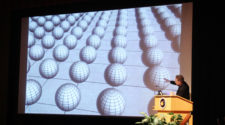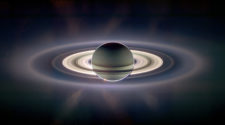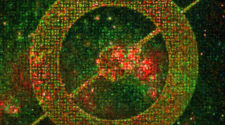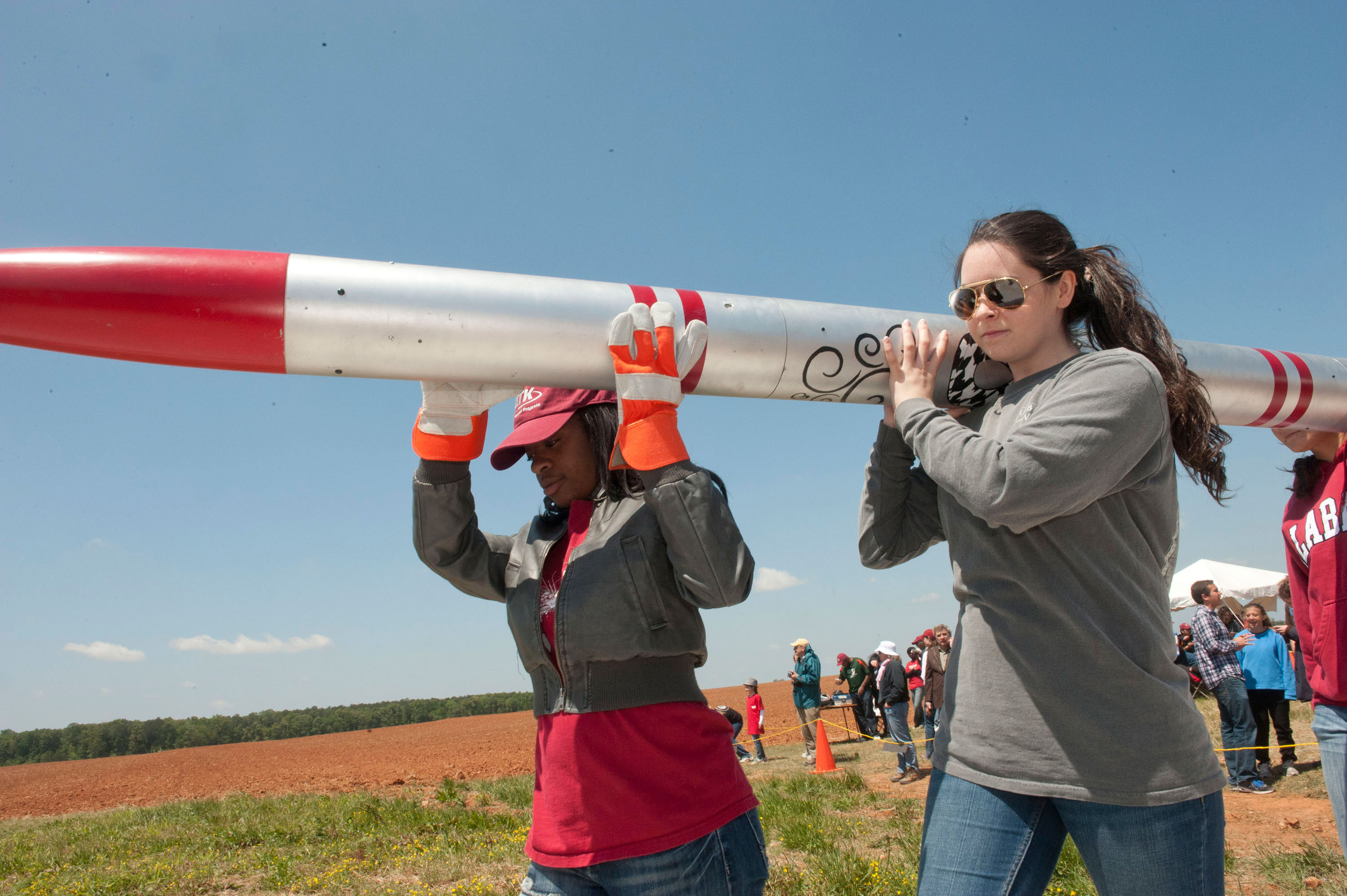
Credit: NASA
The 2013-14 NASA Student Launch rocketry challenge has come to an end – and brought something new to the Bonneville Salt Flats in Tooele County, Utah, where car and motorcycle enthusiasts regularly watch cutting-edge vehicles put to the test, speeding across the vast, flat expanse.
On May 17, all eyes there turned upward as 16 student-built rockets, ranging in size from 7-1/2 feet to 15 feet, soared high into the cloudless blue. Each sophisticated machine carried three working science or engineering payloads. Some roared to altitudes of nearly 20,000 feet. Each successful parachute deployment and vehicle touchdown on the white hardpan was met with cheers and applause from the crowd – which included approximately 250 students from 15 states and some 500 spectators.
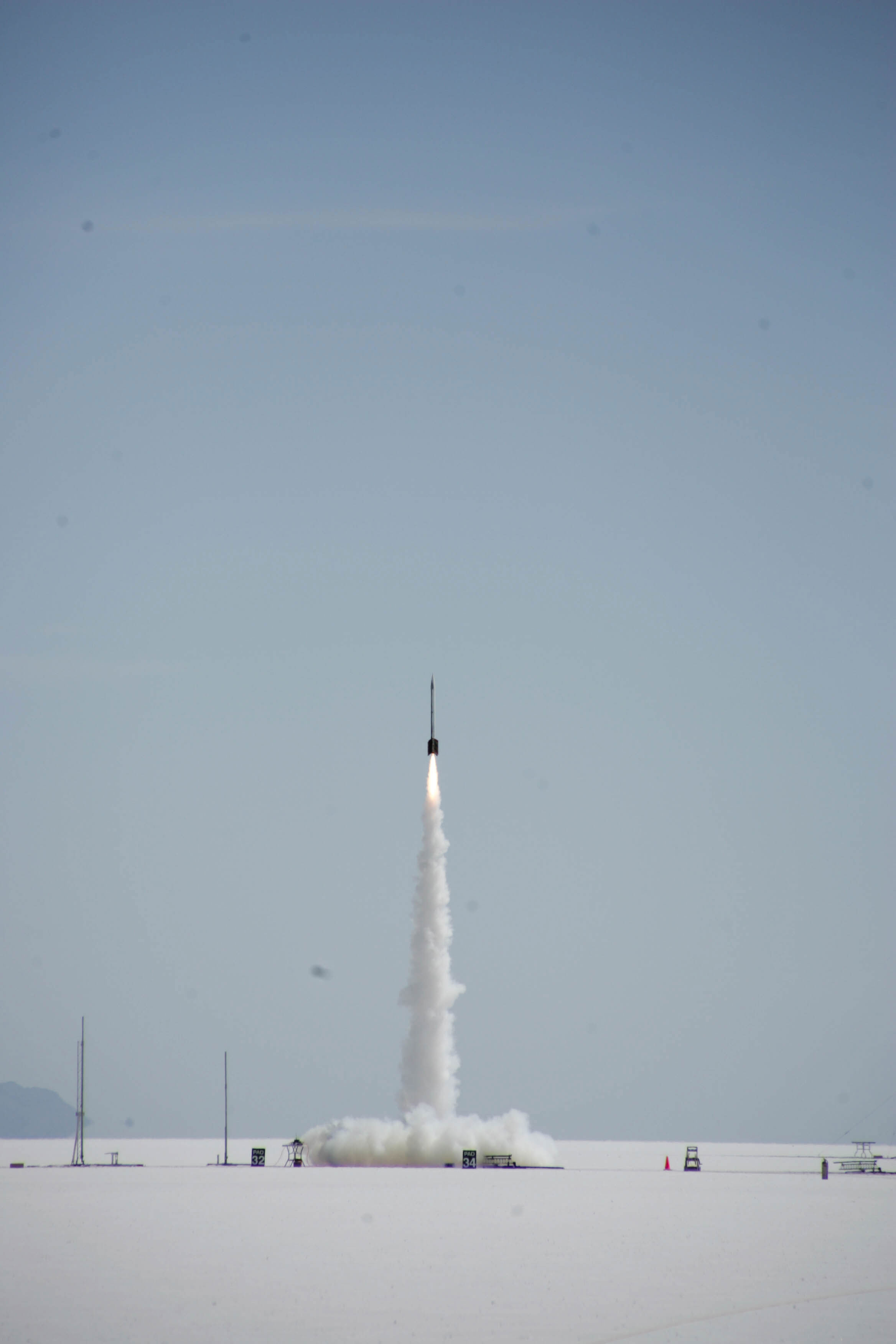
The social media audience, watching live coverage on NASA Television and UStream and following real-time updates on Twitter, was equally jovial. One proud father, whose son was part of the team from Mississippi State University in Starkville, summed up the day’s launches on the NASA Student Launch Facebook page: “This is awesome!”
This was the first year the challenge was held at the Utah site. It is organized annually by NASA’s Marshall Space Flight Center in Huntsville, Alabama, and sponsored by ATK Aerospace Group of Magna, Utah.
Teams designed and built their rockets and experiments beginning in the fall of 2013. They maintained websites to document their experience and visited elementary and middle schools in their communities to inspire younger students to pursue the study of technical subjects critical to the work of NASA and the nation.

Nine preliminary awards were presented at a post-launch banquet May 17. The grand prize – $5,000 from ATK – was awarded in late May after final post-flight analysis and reviews were completed. This year’s preliminary awards included:
- Best Vehicle Design: The University of North Carolina in Charlotte received the award for the most creative, innovative, safety-conscious rocket design.
- Best Payload Design: The University of Notre Dame in South Bend won the award for the most creative and innovative payload experiment, emphasizing safety and scientific value.
- Best Web Design: Vanderbilt University in Nashville won for the best rocketry website.
- Project Review Award: Vanderbilt University was honored for delivering the best combination of written preliminary design, critical design and flight readiness reviews and formal presentations.
- Education Engagement Award: Vanderbilt University won for best inspiring the study of rocketry and STEM-related topics – science, technology, engineering and mathematics — among younger students and their community.
- Closest to Altitude Award: The team from Vanderbilt University went four for four when their rocket came closest to their goal altitude without going over. Their rocket reached an altitude of 4,850 feet — just 150 feet shy of their 5,000-foot goal.
- Safety Award: The University of Louisville in Louisville, Kentucky, was honored for having the best safety practices.
- Peer Awards: All rocket teams submitted votes for peer awards in each division. The “Best-Looking Rocket” award went to the team from the University of Hawaii Community Colleges in Kane’ohe. The “Best Team Spirit” prize was awarded to the team representing the University of Florida in Gainesville.

The Marshall Center’s Academic Affairs Office, part of the Office of Human Capital, has managed the rocketry challenge since its creation in 2000. This is the seventh year ATK has provided corporate sponsorship. The National Association of Rocketry supported launch readiness reviews and range safety.
For more information, including a complete list of participating schools, visit: www.nasa.gov/audience/forstudents/studentlaunch.
Archived launch-day coverage is available at: www.ustream.tv/nasahdtv.

